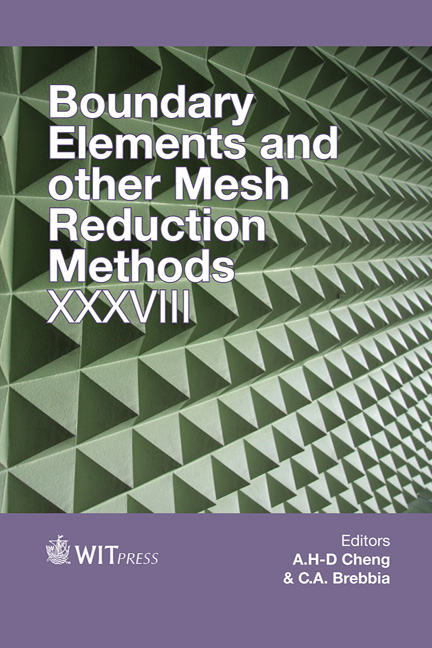Basics Of A Fast-multipole Unified Technique For The Analysis Of Several Classes Of Continuum Mechanics Problems With The Boundary Element Method
Price
Free (open access)
Transaction
Volume
61
Pages
13
Page Range
47 - 59
Published
2015
Size
576 kb
Paper DOI
10.2495/BEM380041
Copyright
WIT Press
Author(s)
H. de Farias Costa Peixoto, L. Simões Novelino, N. A. Dumont
Abstract
The proposed implementations are based on a consistent development of the conventional, collocation boundary element method (BEM) – with concepts taken from the variationally-based hybrid BEM – for large-scale 2D and 3D problems of potential and elasticity. The formulation is especially advantageous for problems of complicated topology or requiring complicated fundamental solutions. This paper, which is the sequel of a first paper presented at the PACAM 2014 Conference in Santiago, Chile, proposes a scheme for expansions of a generic fundamental solution about hierarchical levels of source and field poles. This makes the fast multipole technique directly applicable to different kinds of potential and elasticity problems with generally curved boundaries. The basic concept of the FMM, with the expansion of the fundamental solution about successive layers of source and field poles, is described in a compact algorithm that is more straightforward to lay out and seems to be more efficient than the ones available in the technical literature. The hierarchical tree of poles is built upon a topological concept of superelements inside superelements. The formulation is initially assessed and validated in terms of a simple 2D potential problem. Since iterative solvers are not required in this first step of numerical simulations, an isolated efficiency assessment of the implemented fast multipole technique is possible.
Keywords
hybrid boundary elements, fast multipole method, variational methods





